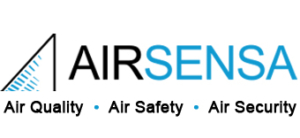EU policies to reduce air pollution and improve air quality have a long tradition in delivering tangible results. However, a decade ago, significant challenges remained or emerged anew which required a more integrated and ambitious approach. The 2005 Thematic Strategy on Air Pollution (TSAP) of the Commission, coming from the 6th Environmental Action Programme (6EAP), provided a comprehensive EU policy framework for the period up to 2020. At the time, it was concluded that no technology scenarios existed that would enable reaching the ultimate objectives stated in the 6EAP. Consequently, “interim objectives” for air quality were established for the period up to 2020.
To reach these interim objectives, sector specific priorities for EU action were identified building on the existing EU legislative body on air quality as well as on sector-specific product and process regulations addressing individual emission sources.
Since the adoption of the TSAP in 2005, most of the outlined measures have been implemented. Those include the streamlining of existing air quality directives in 2008 with the introduction of new air quality limit values for fine particulate matter (PM2.5), and a tightening of emission limit values from different transport sources. In addition, the revision of the Industrial Emissions Directive allowed the inclusion of important new rules for emissions from industrial installations. Finally, most measures taken to reduce greenhouse gas emissions, such as those contained in the 2008/9 Climate Change and Energy Package, are also set to yield important pollutant emission reductions. These together with the decision by the International Maritime Organisation (IMO) to amend the maximum sulphur content of fuels used by the maritime shipping sector are expected to contribute further to improving regional and local air quality.
The 2005 TSAP announced, among other actions, a revision of the NEC (National Emissions Ceilings) Directive in order to align the ceilings with the 2020 TSAP objectives and in particular to introduce a ceiling for particulate matter. Originally foreseen for 2006, the review was postponed to account for the outcome of the negotiations on the Climate Change and Energy Package. A subsequently planned review and revision in 2008 was again delayed due to concerns over implementation difficulties and subsequently because attention being drawn towards focussing in addressing the economic crisis.
The current policy efforts, at EU and national level, have not fully delivered the expected results. Limit and target values of particulate matter, nitrogen dioxide and ground-level ozone are exceeded in many urban areas and global emission of nitrogen oxides (NOx) are not decreasing as much as expected. One of the reasons is the increase in transport volume, the gap between regulated emission limits in type approval and the “real world” emissions and the slower turnover of vehicles fleets (meaning that older vehicles which are often more polluting are staying on the road for longer). Prompt action is required to further reduce air emissions linked to the most problematic pollutants such as particulate matter, ground-level ozone, and nitrogen dioxide. Preparatory work to update the Thematic Strategy and associated measures such as the review of the Ambient Air Quality Framework Directive and the revision of the NEC Directive is to resume without delay with a view of adopting an up-to- date clean air strategy package no later than 2013.
Extract edited from: ‘Commission Staff Working Paper on the implementation of EU Air Quality Policy and preparing for its comprehensive review‘, European Commission, 2011


